War Above the Trenches: DFW C.V (Early)
The Aircraft
The DFW C.V two-seater reconnaissance aircraft has been referred to by historians as one of the truly great aircraft of the First World War.
Developed in the early months of 1916 from earlier types, the first C.V production examples reached the Front in October that year, and immediately found favour with flight personnel, particularly when fitted with the Benz Bz.IV engine, which gave the aircraft significantly improved performance characteristics.
The C.V's main designer was Heinrich Oelerich, and it was produced in larger numbers than any other German aircraft during World War I. About 2000 were manufactured by DFW and about 1,250 under licence by Aviatik (as the DFW C.V (Av) or Aviatik C.VI), Halberstadt, LVG, and Schütte-Lanz.
In the hands of a skilled pilot it could outmanoeuvre most Allied fighters of the period. It was seen as equal to the Bristol Fighter in respect of manoeuvrability and could out-climb the Salmson 2.A2. It remained in active service until early 1918 and 600 were still in use by the time of Armistice in November 1918. Most were thereafter scrapped according to the Treaty of Versailles in 1919.
Colours and markings were various, including those noted on one downed aircraft in 1918 as being stippled in irregular patches of bright greenish-grey, bright purple and dark grey, apparently applied with a brush or spatter-cap spray.
The Model
This is Polish firm Karaya's 1/48 resin offering of the DFW C.V (Early). I've previously posted four Progress reports about this build so won't revisit those elements here.
Like much resin casting, the details are finer than plastic, but lack some of the niceties we've grown used to as modellers in recent years, e.g., delicate sub-assemblies, positive location points and CAD instructions. However, if you want you get back to 'skills modelling' and away from the 'shake-and-bake' school (damned and lauded in equal measure), projects like this offer a refreshing, if challenging, alternative.
Apart from the rigging line and turnbuckles, and a couple of small pieces of wire, everything here is from the kit, although I did manage to lose the wireless dynamo that appears on the undercarriage strut, and so shaped a tiny piece of plastic rod as a replacement.
The beautiful Techmod decals are for three machines: German and, post-War, a Polish and Ukrainian machine, respectively.
These quarter-scale Karaya kits are not of the all-singing, all-dancing Wingnut Wings variety, more the smaller, back alley punks spoiling for a fight. And in the face of models collected simply as a resale hedge, or aftermarket items as costly as the original model, maybe a cold splash of water in the face from time to time is no bad thing.
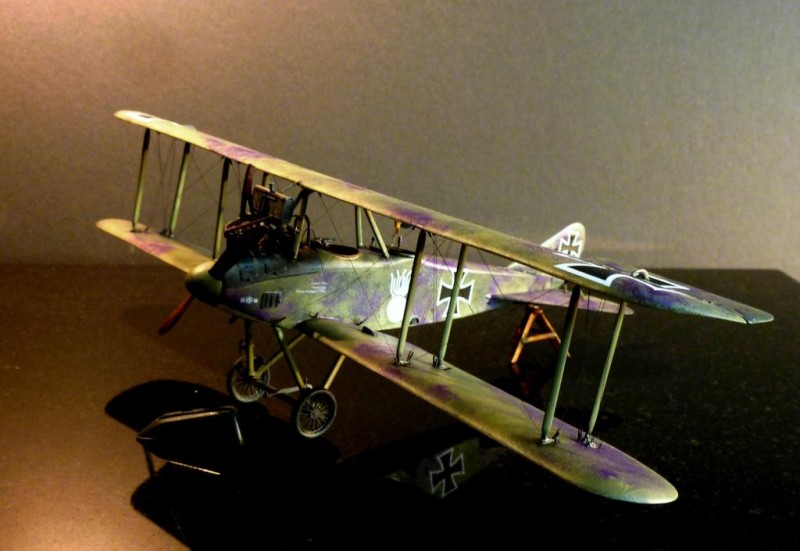
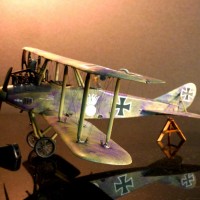
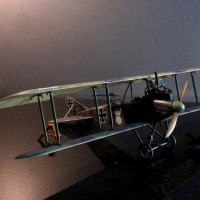
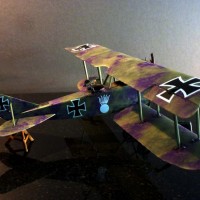

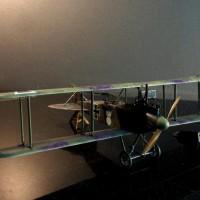
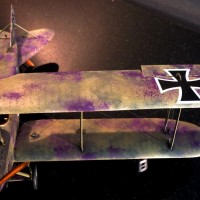
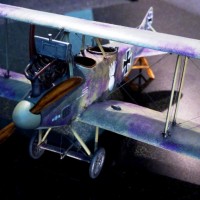
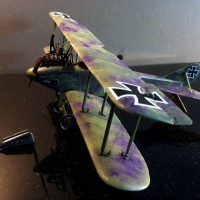
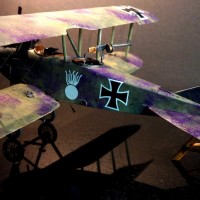
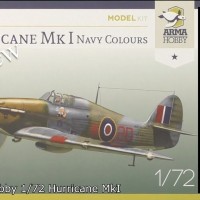
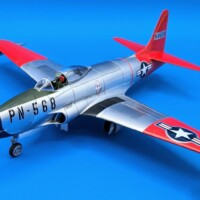
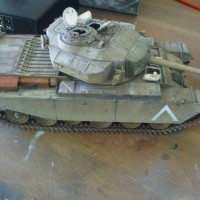
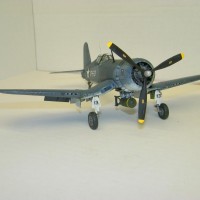
Absolutely stunning! I'm still amazed at the rigging.
Cheers, Robert.
A real work of love Rob, this rigging is indeed one of the steps that makes this build very special! Good to see work from you!
Thanks, Michel. I appreciate your comments too in the Progress posts.
Nice job Rob.
Really nice to see it done. Love the wires and struts. It reminds me of a model I made some year ago...
Thanks, guys.
I can only add to the "well-done's", my friend!
You are a real artist Rob - not just in the model, but in your moody lighting and use of reflective surface, and your eloquence!
I'm always the backer of the alley punk against the rich kid!
Certainly went for the mood lighting - may have overdone it...
The rigging would be hard in 1/32, so it's realy impressive in 1/48. Thanks for the note on painting, since I was wondering about the scheme, having not seen it before. Great work!
Cheers, Tom. The Datafile 53 very important to have to hand to get the best out of this kit - also where I read about the unusual camo scheme, which I’d previously only associated with Halberstadt machines,
As Greg says, give me the 'back alley punk' any day. I think I like this model for all the 'right' reasons. Time and effort, skills and artistry.
Been following your build; finished product is awesome! Overall model is fantastic as well as the fine details you nailed perfectly. Love the unique subject build and appreciate your efforts!
Thanks, Paul. I know Great War aircraft are more a niche subject here, but I do appreciate the comments. I've had a positive response on Ray Rimmell's Windsock and Datafile FB page as well so it seems to be a project of interest.
Outstanding and beautiful work of Modeling Art, Rob! The paint scheme came off perfectly and I've thoroughly enjoyed the WIP reports. Great rigging, too! Thanks for sharing your reports.
I look forward to your next project.
WW1 aircraft may be a niche subject here but they show a different skill level to do one correctly. I've always enjoyed aircraft from the early days of aviation, particularly planes from the "great war." (There is no GREAT in war except from people, in my opinion.) In 1976 I had the opportunity to visit Old Rhinebeck aerodrome for a weekend and I got to meet (the late) Cole Palen, the owner. I am also friends with an older gent who just turned 89. Right after WWII ended he was employed down in Texas as a crop duster. The man he worked for had a small fleet of surplus aircraft and my friend, Bob Browning, flew an old SPAD converted to drop sulfur powder (DDT was already outlawed there) as an insecticide on rice fields! A SPAD! Pretty amazing, I think.
A SPAD? Now there’s a story...
Rob- That is an absolutely stunning build- especially when you consider that it is a resin kit. I try to stay away from those things because they're often warped, full of bubbles and crudely cast. You did a magnificent job with the assembly, the paint and that exquisitely executed rigging (especially those microscopic turnbuckles). Can't wait to see your next masterpiece.
Cheers, George.